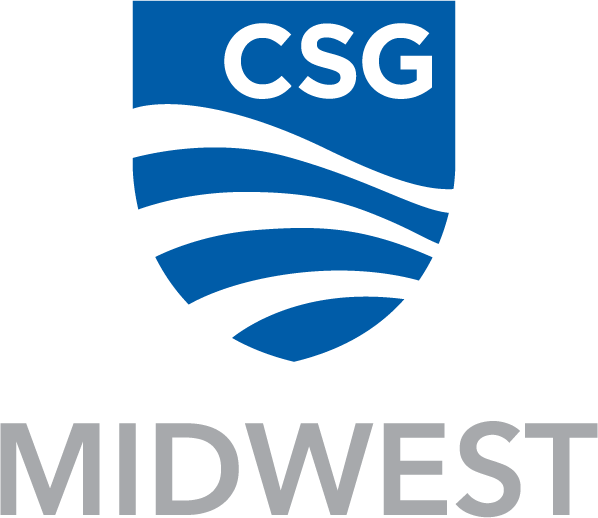Data Centers in the Midwest: Recap
The proliferation of data centers across the country, and the Midwest, holds out hope for a high-tech economic future, especially as the use of cloud-based services and artificial intelligence applications grow exponentially. But they need water to help keep equipment cool, which can stress water resources.
Following the passage of the Great Lakes-St. Lawrence Legislative Caucus (GLLC) Resolution to Monitor Withdrawals with the Great Lakes-St. Lawrence River Basin, the GLLC co-hosted a webinar with the CSG Midwestern Legislative Conference Energy & Environment Committee on data centers and water use. Participants heard from Dr. Lauren Bridges from the University of Virginia about the growing data center industry’s impact on the environment and Dr. Carrie Jennings from Freshwater about groundwater geology and governance in the Midwest.
Dr. Bridges shared information about the growing data center industry, pointing out that global data center capacity, power consumption, and emissions are expected to double over the next five years, estimated to account for 6% of energy demand in the U.S. Water demand is closely tied to data center expansion, both in increased energy generation and being used to cool servers. Globally, data centers are expected to consume 450 million gallons of water per day by 2030, compared to 205 million gallons per day in 2026. For the U.S., that figure is 75 billions gallons per day. Microsoft reported 2.1 billion gallons of water use in data center in 2023, 42% of which was in areas with low water availability, Google used 6.1 billion gallons of water in 2023 with 15% from water insecure areas.
In response to this growth, communities around the country are looking at ways to regulate the environment and social impacts of data centers. Virginia is looking at water and power transparency, as well as specifying certain areas for data center development. However, there is a need for states and communities to be looking at cumulative and regional environmental impacts to ensure the long term availability of energy and water.
Dr. Jennings provide an analysis of groundwater policies in the Midwest and how policies interact with data center development. There are a number of groundwater sources in the Midwest due to the region’s geology, but there is variation in how much information is known about consumption and recharge from aquifers. Most groundwater in the region is used for public water supply, agriculture, and industrial use. In areas where public drinking water relies on an aquifer, there would be potential for a data center to affect the long term viability of the groundwater source.
Specific to the Great Lakes-St. Lawrence River basin, the Great Lakes Compact has notification requirements for large water users in the basin. Users withdrawing 100,000 gallons or more per day must be reported, and consumptive use of five million gallons per day requires notice to the other states in the Compact.
See the slides and recording here.


